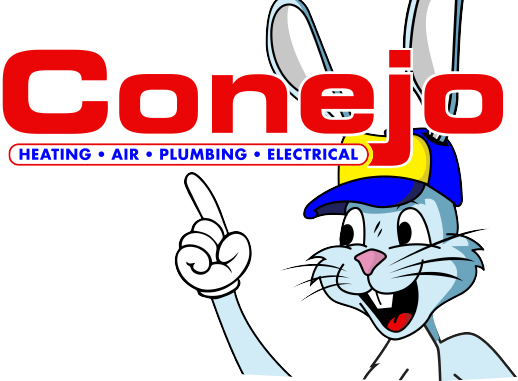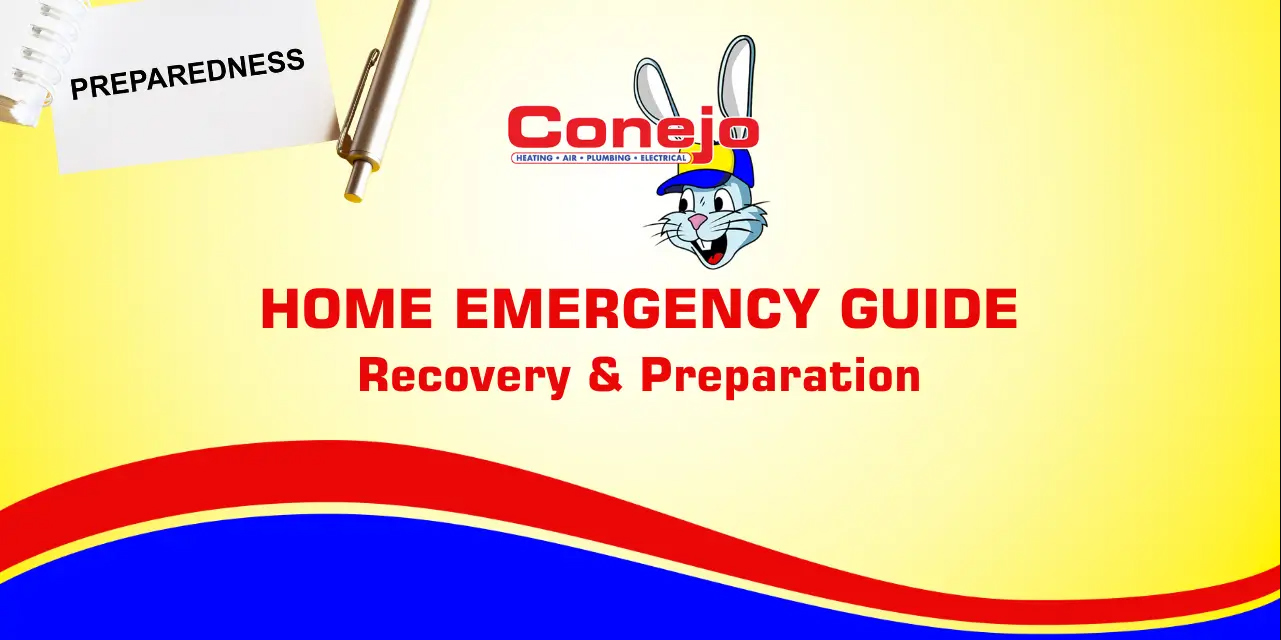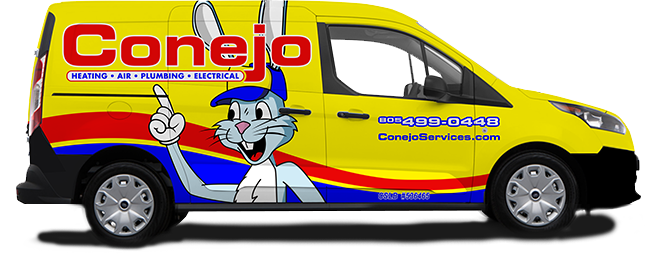As our community recovers from the recent windstorms and fires, many of our neighbors have reached out with questions about repairs and home protection. We’ve gathered these questions – and our expert answers – in the home emergency preparedness guide below, plus our recommendations on preparing your home for the future.
Recovery FAQs
» 1. HVAC and Air Quality Recovery FAQs
How do I get rid of the lingering smell of smoke in my home?
Smoke particles can settle into your air ducts, carpets, upholstery, HVAC filters and wall cavities.Professional duct cleaning and replacing your air filters can eliminate lingering odors.
How do I know if my HVAC system needs to be replaced after wildfires or winds?
Have your system professionally inspected if you notice any of these warning signs: unusual noises, burning smells, smoke odors that persist after filter changes, failure to turn on, or erratic operation.Replacement may be necessary if the outdoor unit shows visible damage from debris, if high winds shifted it from its mounting, or if intense heat and smoke caused internal damage. While some issues can be repaired, extensive damage to multiple components often makes replacement the more cost-effective choice.
Is it safe to run my heater/AC now?
Assuming you’re not experiencing the issues above, it should be safe to run your HVAC system once you take these precautions: Install a clean filterSet your HVAC to “recirculate” mode to minimize pulling in outside air Keep your windows and doors closed Monitor your filter condition. It may need more frequent changes after fires.
Do I need to replace my air filters even if I didn’t run my heater during the fires?
Yes, smoke particles can still enter your home and settle in the filter even when your system isn’t running. Replace your filters after fires to ensure clean air is being used when you restart your system.Wait until air quality has improved and ash has settled – typically about 1-2 weeks after fires are contained.
» 2. Water System Recovery FAQs
Is my tap water safe to drink after the fires?
Start by following your local water authority’s guidance.Your whole-home filtration system also provides an extra layer of protection, but you may want to have a professional water quality test performed for certainty. Keep bottled water available until you’re confident in your water quality.
Do I need to flush my water heater after water service interruptions?
Yes, it’s recommended to run hot water for 15-20 minutes, then check for sediment in the water. If your water remains discolored or you’re uncertain about the quality, contact a plumber for a professional flush.
» 3. Power and Electronics Recovery FAQs
When can I turn my electronics back on after a power outage?
Wait until power has been restored for at least 10 minutes to ensure stability. If you notice flickering lights or voltage fluctuations, wait longer and consider using a surge protector (if not already) before plugging in sensitive electronics.
What should I check before using appliances that got wet?
Never attempt to use electronics or appliances that have been water-damaged. Have a licensed electrician inspect them first. Even if they appear dry on the outside, internal components may be corroded or damaged.
Is it safe to use my generator indoors when the power is out?
No. Never use generators inside your home or garage, even with ventilation. Always operate generators outdoors, at least 20 feet from any doors, windows, or vents to prevent carbon monoxide poisoning.
» 4. Home Insulation Recovery FAQs
How do I know if my insulation was affected by smoke and ash?
Check your attic and crawl spaces for visible ash, discoloration, or smoke odors. Pay special attention to areas around vents where ash may have entered. If you smell smoke in your living spaces even after thorough cleaning, your insulation may have absorbed odors and should be inspected by a professional.
Should I replace insulation that smells like smoke?
If your insulation has absorbed strong smoke odors, consider replacement. Smoke-contaminated insulation can continue to release odors and potentially harmful particles into your home for months.Have a professional assess the extent of smoke penetration to determine if replacement is necessary.
The high winds revealed some gaps in my insulation – what should I do?
Have these gaps filled promptly. Even small gaps from wind damage can reduce your home’s energy efficiency and create entry points for smoke during future fires. A professional can assess whether you need spot repairs or if it’s time for more comprehensive insulation replacement.
How can I better protect my insulation during future fires?
Focus on sealing entry points where smoke and ash can infiltrate. Install ember-resistant vent covers, seal gaps around pipes and electrical entries, and ensure your attic door seals tightly. Consider upgrading to fire-resistant insulation materials in critical areas when replacing existing insulation.
Preparing Your Home for Future Emergencies
» 1. HVAC and Indoor Air Quality Preparedness
Check your HVAC filters monthly – or even more frequently during fire season if you are close to active fires. Here are some common guidelines for replacing your filters: standard filters 1-3 months, high-efficiency filters 6-12 months, homes with allergies or pets 1-2 months, homes in dusty or polluted areas 1-2 months, infrequently used systems 6 months.
If your home was close to the fires, it may have sustained damage to internal or exterior components due to high temperatures and heavy ingestion of smoke and ash. Heavy winds may have damaged the unit’s mounting or parts due to debris. If you see any of these signs, call a professional to discuss possible replacement: unusual noises or burning smells, system won’t turn on or runs erratically, visible damage, persistent smoke odor even after cleaning.
Consider investing in air purifiers for your most-used rooms. These are providing immediate relief for families during the recent poor air quality days.
Have your air ducts professionally cleaned after nearby fires. This removes settled smoke and ash particles that can continue to affect your indoor air quality.
Keep your windows and doors properly sealed and regularly assess your home’s seal integrity.
Schedule regular HVAC maintenance. Well-maintained systems are proving more reliable during crises. We recommend a full HVAC tuneup at least once a year that includes a complete safety inspection and parts cleaning.
Consider an air scrubber to significantly improve indoor air quality by removing smoke, pollutants, and allergens. Air purifiers are effective at capturing pollutants whereas air scrubbers also actively clean and sanitize the air and surfaces by using advanced technology like UV light.
» 2. Water System Preparedness
Keep extra water on hand. Having a few cases of bottled water stored is convenient during service interruptions or emergencies.
Store supplies to make water drinkable if tap water becomes unsafe. Filtering straws or water purification tablets can be lifesavers.
Consider a whole-house water filtration system that removes impurities like sediment, debris, and other harmful substances – giving you peace of mind and clean water from every tap when local water quality might be affected. Beyond safety in emergencies, it improves taste, protects plumbing and appliances, and promotes better health on a daily basis.
» 3. Power Outage Preparedness
Protect your electronics and appliances with quality surge protectors. For layered protection, consider a whole-home surge protector installed at the electrical panel to handle large surges due to grid issues, safeguarding every outlet and expensive hardwired appliances (like your HVAC system, water heater, oven, and so forth).
Consider investing in a generator – either a basic portable generator for essential medical equipment and refrigeration, or a whole-home generator to keep your entire house powered through outages for security and comfort.
If you already have a generator, add an automatic transfer switch that will switch your home to backup power automatically during outages.
Make sure everyone in your household knows where to find your electrical panel and how to shut off power safely if needed.
» 4. Home Insulation Preparedness
If you smell smoke in your insulation, consult a professional about replacement options. Consider fire-resistant insulation materials rated for our
climate.
Inspect attic insulation for ash infiltration from vents or small gaps. Seal all gaps and install ember-resistant vent covers to protect insulation during future fires.
Install a whole-house air sealing system to better protect against smoke infiltration.
Look for areas where high winds may have shifted or compressed insulation.
- For blown-in insulation: Have a professional redistribute and add material to restore the proper depth.
- For batt insulation: Carefully reshape and re-fluff compressed areas. Replace any sections that won’t return to full thickness.
Add weatherstripping around doors and windows to better seal against smoke.
Consider having an energy audit to identify gaps that could let in smoke during future fires.
Taking Action
Remember, you don’t need to tackle everything at once. Start with what matters most for your family and build your preparedness plan step by step. If your home has been affected by the recent fires or wind storms, or you’d like to plan ahead for future emergencies, we’re here to help. Call us today!












